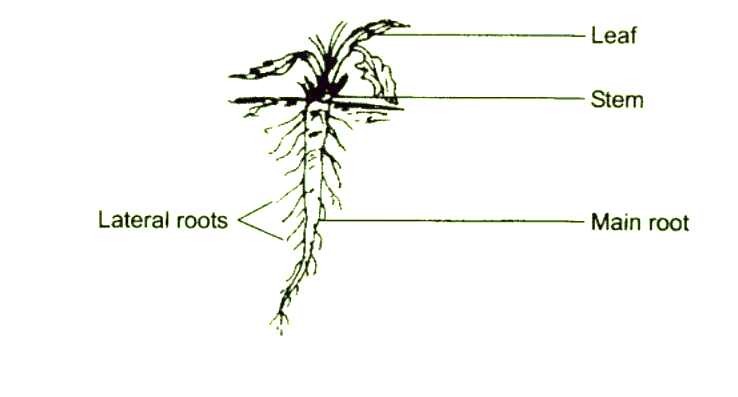SEBA Class 6 Science (English Medium) Lesson 2 – “Getting to Know Plants” Summary & Solutions
Looking for SEBA Class 6 Science (English Medium) Lesson 2 – “Getting to Know Plants” solutions? At Ospin Academy, we provide detailed NCERT-based textbook answers, multiple-choice questions (MCQs), and a complete chapter summary to help students in Assam prepare for their exams.
📖 Chapter Overview:
Plants are essential for life on Earth. This chapter explores different types of plants, their parts, and their functions, with a focus on Assam’s rich biodiversity.
- Types of Plants: Herbs, shrubs, and trees
- Parts of a Plant: Roots, stems, leaves, flowers, and fruits
- Photosynthesis: How plants make food using sunlight
- Examples from Assam: – Tea plantations in Assam – Medicinal plants used in Assamese Ayurveda – Bamboo forests and their importance
- Importance in Daily Life: Food, oxygen production, medicine, and shelter
📌 Key Topics Covered:
- ⭐ What are the different types of plants?
- ⭐ How do roots help a plant?
- ⭐ Why are leaves important for plants?
- ⭐ What is the process of photosynthesis?
- ⭐ How do plants in Assam contribute to the environment?
📝 Why Use Our Solutions?
- ✅ Exam-Oriented Solutions: Fully NCERT-aligned answers for Class 6 Science Lesson 2 (Part 2)
- ✅ MCQs & Extra Questions: Prepare better with objective-type questions
- ✅ Concept Clarity: Well-explained answers with examples from Assam to help students relate to real-life applications
- ✅ Quick Revision Notes: Summarized notes for last-minute SEBA exam revision
Start learning SEBA Class 6 Science (English Medium) Lesson 2 – Getting to Know Plants with Ospin Academy’s step-by-step solutions, specially designed for students in Assam!
Class 6 Science (English Medium) PDF Solutions 2025-26 | SCERT Assam
Download the Class 6 Science SCERT Assam (English Medium) PDF for SEBA Assam students. Get the latest NCERT-based textbook, chapter-wise solutions, MCQs, short and long-answer questions, and important revision notes. This SEBA Class 6 Science Book PDF covers Physics, Chemistry, and Biology, helping students prepare effectively for exams.
Exercise |
|---|
1. Correct the following statements and rewrite them in your notebook.
(a) Steam absorbs water and minerals from the soll.
(b) Leaves hold the plant upright.
(c) Roots conduct water to the leaves.
(d) The number of petals and sepals in a flower in always equal.
(e) If the sepals of a flower are joined together, it’s petals also joined together.
(f) If the petals of a flower are joined together, then the pistil is joined to the petal
Ans: (a) Roots absorb water and minerals from the soil.
(b) Roots hold the plant upright.
(c ) Stem conducts water to the leaves.
(d) The number of petals and sepals in a flower is usually equal.
(e) If the sepals of a flower are joined together, its petals are not necessarily joined together.
(f) If the petals of a flower are joined together, then the pistil is not joined to the petal.
2. Draw
(a) a leaf.
(b) a taproot. and
(c) a flower, you have studied for table 7.3.
Ans: (a) leaf:

(b) a taproot:

(c) a flower:

3. Can you find a plant in your house or in your neighborhood, which has a long but weak stem? Write its name. In which category would you classify it?
Ans: Yes, we found a bottle gourd (lauki) plant in our house. It is a climber.
4. What is the function of a stem in a plant?
Ans: Following are the function of a stem in a plant:
- Stem holds the plant upright.
- Stems transport water from roots to different parts of plants.
- Stems conduct food from leaves to other parts of the plants.
5. Which of the following leaves have reticulate venation?
Wheat, Tulsi, maize, grass, coriander (dhaniya), china rose
Ans: Tulsi, coriander and China rose.
6. If a plant has fibrous root, what type of venation do its leaves likely to have?
Ans: If a plant has a fibrous root, its leaves have parallel venation.
7. If a plant has leaves with reticulate venation, what kind of roots will it have?
Ans: If a plant has leaves with reticulate venation, it will have a tap root.
8. Is it possible for you to find out whether a plant has taproot or fibrous roots by looking at the impression of its leaf on a sheet of paper?
Ans: Yes it is possible to find out whether a plant has taproot or fibrous roots by looking at the impression of its leaf on a sheet of paper.
9. Write the names of the parts of a flower.
Ans: Sepal, petal, stamens, pistil.
10. Which of the following plants have you see? Of those that you have seen. which one have flowers?
Grass, maize, wheat, chili, tomato, Tulsi, pipal, shisham, banyan, mango, Jamun, guave, pomegranate, papaya, banana, lemon, sugarcane, potato, groundnut.
Ans: Plants which have flowers are: Grass, maize, wheat, chili, tomato, Tulsi, pipal, shisham, banyan, mango, Jamun, guave, pomegranate, papaya, banana, lemon, sugarcane, potato, groundnut.
11. Name the part of the plant which produces its food. Name this process.
Ans: Leaves produce food for plants. The name of this process is photosynthesis.
12. In which part of a flower, you are likely to rid the ovary?
Ans: We are likely to rid the ovary of the lowermost part of the pistil.
13. Name two flowers, each with joined and separated sepals.
Ans: Flowers with joined sepals:
(i) Datura.
(ii) Cotton.
Flowers with separate sepals:
(i) Rose.
(ii) Mustard.
SEBA Class 6 Science Lesson 2 – Getting to Know Plants FAQs
Get Free NCERT PDFs
If you want to download free PDFs of any chapter, click the link below and join our WhatsApp group:

